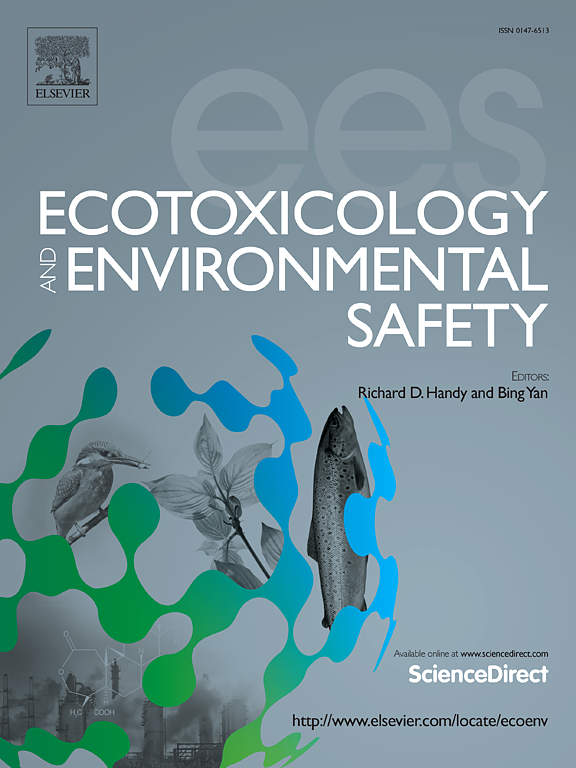Maternal exposure to Aristolochic Acid I affects meiotic I progression by impairing DNA damage repair in fetal oocytes
IF 6.2
2区 环境科学与生态学
Q1 ENVIRONMENTAL SCIENCES
引用次数: 0
Abstract
Aristolochic acid I (AAI), the predominant compound in Aristolochiaceae plants and Asarum species, is a widespread environmental contaminant capable of accumulating in soil, contaminating water and crops, ultimately entering the human body. Its nephrotoxic, carcinogenic, and reproductive toxic effects pose significant health concerns. This study investigates the impact of maternal AAI exposure on meiotic prophase I (MPI) during early fetal oogenesis. Pregnant mice were orally administered AAI at doses of 0.03125, 0.125, and 1 mg/kg from 14.5 to 16.5 dpc, with fetal ovaries collected at 17.5 dpc. AAI exposure induced meiotic defects in fetal oocytes, including delayed progression of MPI, increased DNA damage, and impaired homologous recombination. Furthermore, AAI induced oxidative stress, reduced mitochondrial membrane potential and triggered apoptosis, leading to a diminished ovarian reserve in neonatal ovaries. Mechanistically, these defects were mediated by heat shock proteins which altered protein-protein interactions crucial for DNA repair. Given the pivotal role of early oogenesis in determining female fertility and ensuring the health of offspring, these findings underscore the potential reproductive risks of AAI exposure during pregnancy. This study highlights the urgent need for greater awareness of foodborne contaminants and the implementation of preventative measures to mitigate maternal AAI exposure, thereby safeguarding offspring fertility and health.
求助全文
约1分钟内获得全文
求助全文
来源期刊
CiteScore
12.10
自引率
5.90%
发文量
1234
审稿时长
88 days
期刊介绍:
Ecotoxicology and Environmental Safety is a multi-disciplinary journal that focuses on understanding the exposure and effects of environmental contamination on organisms including human health. The scope of the journal covers three main themes. The topics within these themes, indicated below, include (but are not limited to) the following: Ecotoxicology、Environmental Chemistry、Environmental Safety etc.

 求助内容:
求助内容: 应助结果提醒方式:
应助结果提醒方式:


